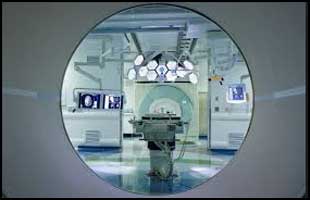- Home
- Editorial
- News
- Practice Guidelines
- Anesthesiology Guidelines
- Cancer Guidelines
- Cardiac Sciences Guidelines
- Critical Care Guidelines
- Dentistry Guidelines
- Dermatology Guidelines
- Diabetes and Endo Guidelines
- Diagnostics Guidelines
- ENT Guidelines
- Featured Practice Guidelines
- Gastroenterology Guidelines
- Geriatrics Guidelines
- Medicine Guidelines
- Nephrology Guidelines
- Neurosciences Guidelines
- Obs and Gynae Guidelines
- Ophthalmology Guidelines
- Orthopaedics Guidelines
- Paediatrics Guidelines
- Psychiatry Guidelines
- Pulmonology Guidelines
- Radiology Guidelines
- Surgery Guidelines
- Urology Guidelines
MRI shows signs of gadolinium retention in MS patients

Magnetic Resonance Imaging (MRI) with a gadolinium-based contrast agent (GBCA) showed signs of gadolinium retention in patients with multiple sclerosis, according to a study published in the Insights into Imaging.
The study demonstrated that multiple injections of gadobutrol and/or gadoterate can lead to visible and quantifiable increases in DN/PSI ratio in some patients with MS.
The researchers observed increased T1-weighted signal intensity in patients who had received the GBCA. Also, effects from gadobutrol (Gadavist, Bayer) and gadoterate meglumine (Dotarem, Guerbet) appeared to depend on the number of administrations, with T1 hyperintensity most evident after the fourth or fifth GBCA-enhanced scan. Furthermore, the researchers found no evidence that the visible T1 hyperintensities or increases in signal intensity ratios in the dentate nucleus/pons region of the brain had any adverse effect on patient health or safety.
To investigate the appearance of visible dentate nucleus (DN) T1-hyperintensity and quantify changes in DN/pons (DN/P) signal intensity (SI) ratio in MS patients, one hundred forty-nine patients with confirmed MS were evaluated. Patients received at least two administrations of gadobutrol, gadoterate, or both. Two experienced neuroradiologists in consensus evaluated unenhanced T1-weighted MR images from all examinations in each patient for evidence of visible DN hyperintensity. Thereafter, SI measurements were made in the left and right DN and pons on unenhanced T1-weighted images from the first and last scans. A two-sample t-test compared the DN/P SI ratios for patients with and without visible T1-hyperintensity.
Key Results
- Visible T1-hyperintensity was observed in 42/149 patients (19 after gadobutrol only, 15 after gadoterate only, 8 after both), typically at the 4th or 5th follow-up exam at 3–4 years after the initial examination.
- Significant increases in DN/P SI ratio from first to last examination were determined for patients with visible T1-hyperintensity but not for patients without visible T1-hyperintensity.
Based on their results, the authors concluded that in some patients with MS, multiple injections of gadobutrol and/or gadoterate may result into visible and quantifiable increases in DN/P SI ratio.
For reference, click on the link: insightsimaging.springeropen.com

Disclaimer: This site is primarily intended for healthcare professionals. Any content/information on this website does not replace the advice of medical and/or health professionals and should not be construed as medical/diagnostic advice/endorsement or prescription. Use of this site is subject to our terms of use, privacy policy, advertisement policy. © 2020 Minerva Medical Treatment Pvt Ltd